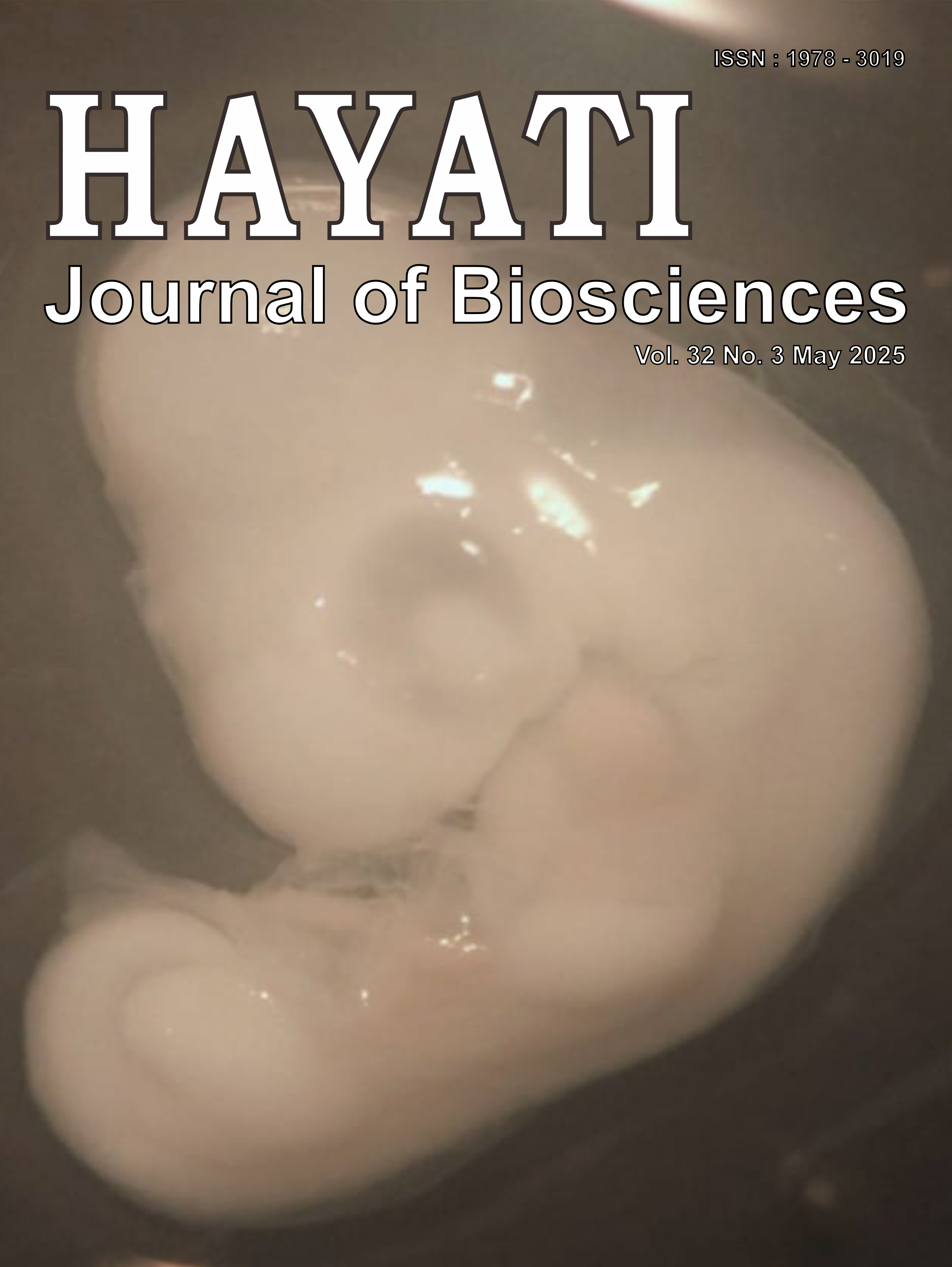Exploration of Lipid Profile and Wax Ester Content from Local Strain Euglena sp. IDN33 Cultivated in Mixotrophic Condition Combined with Molasses Supplementation
Abstract
The transition from fossil fuels to sustainable renewable energy is currently growing rapidly. Euglena sp. can be the source of biofuel. Molasses, in addition to Euglena sp., can increase the levels of paramylon and wax esters produced. Therefore, this study aims to analyze cell growth, lipid profile, and wax ester content of Euglena sp. cultivated under mixotroph conditions with molasses. Euglena was cultivated under mixotrophic conditions with the addition of various concentrations of molasses (0, 10, 15, and 20 g/L) until the final log phase. Then, measurements were made on cell density, levels of lipids, proteins, and paramylon to measure the growth and metabolites profile of Euglena sp., along with lipid profile and wax ester analysis using GC-MS. The results of the study showed that 10 g/L molasses increased Euglena growth (SGR 0.1736± 0.0213 mg/ml) and carbohydrate (0.426 mg/ml) but reduced lipid accumulation (2.29 mg/ml). This treatment provides the best result before control. Molasses does not increase carbohydrates and protein but increases paramylon accumulation. The GC-MS assay detected more lipid profiles and concentrations of each lipid type in non-molasses-treated Euglena sp. compared to molasses-treated. Euglena was cultivated on molasses, which was dominated by palmitic acid and myristyl myristate with the absence of PUFA-type fatty acids in the cells, while the untreated ones were dominated by stearic acid and myristyl myristate. Thus, 10 g/L supplementation of molasses is the most effective treatment compared to others.
Downloads
Copyright (c) 2025 Adam Astiti, Tia Erfianti, Khusnul Qonita Maghfiroh, Renata Adaranyssa Egistha Putri, Eko Agus Suyono

This work is licensed under a Creative Commons Attribution-NonCommercial 4.0 International License.
HAYATI J Biosci is an open access journal and the article's license is CC-BY-NC. This license lets others distribute, remix, tweak, and build upon author's work, as long as they credit the original creation. Authors retain copyright and grant the journal/publisher non exclusive publishing rights with the work simultaneously licensed under a https://creativecommons.org/

























.png) IPB University
IPB University Department of Biology
Department of Biology The Indonesian Biological Society
The Indonesian Biological Society 

